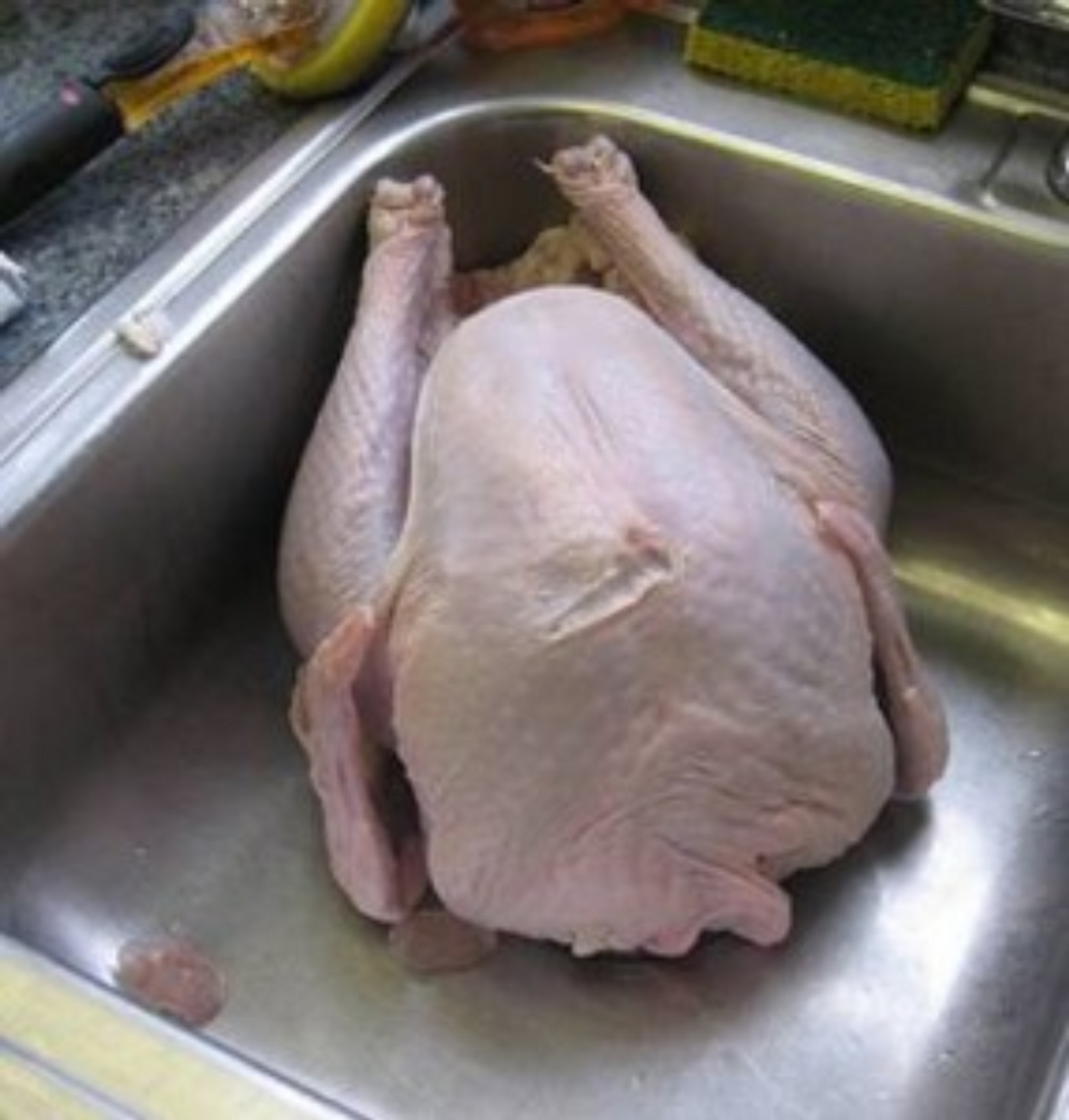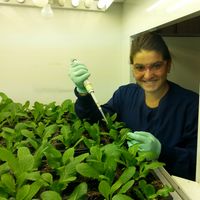Washing Your Thanksgiving Turkey Does More Harm than Good
Washing Your Thanksgiving Turkey Does More Harm than Good
The United States Department of Agriculture (USDA) reports that over 45 million turkeys will be consumed on Thanksgiving this year. When accounting for all the side dishes and desserts that are served in alongside the turkey, double the number of foodborne illnesses could potentially occur. The Centers for Disease and Prevention (CDC) provides tips to help keep your family and friends safe from foodborne illness throughout this holiday season.
It is important to remember NOT to wash your turkey. Research shows that washing your turkey can splash bacteria around your kitchen as far as 3 feet from the kitchen sink. Cooking your turkey is the best way to kill bacteria. Credit: Food Poison Journal
The first step toward providing a safe turkey for your thanksgiving meal begins with the thawing process. The CDC recommends that the turkey be defrosted either in the refrigerator, the microwave, or in a sink of cold water that is changed every 30 minutes. With refrigeration being the safest thaw method, the turkey requires 24 hours of thaw time for every 4 to 5 pounds of weight. It is not safe to leave a frozen turkey to thaw on the counter top at room temperature. After 2 hours, bacteria will begin to grow rapidly. Once thawed, the turkey should be cooked within 1-2 days.
One common misconception surrounding the preparation of the turkey is that washing the turkey will help remove bacteria. Research shows that washing the turkey actually does more harm than good. Studies have shown that washing the bird in the kitchen sink can splash bacteria up to a distance of 3 feet. This could lead to potential contamination of surfaces and utensils surrounding the sink including countertops, towels, or other dishes. It is important to remember that the only method proven to kill bacteria on your turkey is to cook it to the appropriate temperature.
Once the turkey is completely thawed, set the oven to 325 degrees F and cook breast side up in a pan that is 2 to 2.5 inches deep. Cooking times will vary depending on the weight of the turkey, which us usually about 20 minutes of cooking time per pound of meat.
The most important step in ensuring a safe turkey this Thanksgiving, is to use to meat thermometer to confirm it has reached an internal temperature of 165 degrees F. The temperature should be checked in the thickest part of the breast, the innermost part of the wing, and the innermost part of the thigh. Continue to cook the turkey until the temperature in all 3 locations reaches 165 degrees F.
The safest way to cook stuffing is to cook separately from the turkey inside its own casserole dish. If you are putting stuffing inside your turkey, don’t stuff the turkey until just before you put it in the oven. Ensure that the turkey as well as the thickest portion of the stuffing are cooked to an internal temperature of 165 degrees F. Once removing the turkey from the oven, allow it to rest for 20 minutes before removing the stuffing and carving the meat.
In terms of leftovers, all foods should be placed in the refrigerator within two hours of serving. If the food is sitting out more than two hours at room temperature, bacteria has already begun to multiply and has the potential to cause illness if consumed. All leftovers should be consumed within 4 days.
Sources: CDC, Food Safety News









